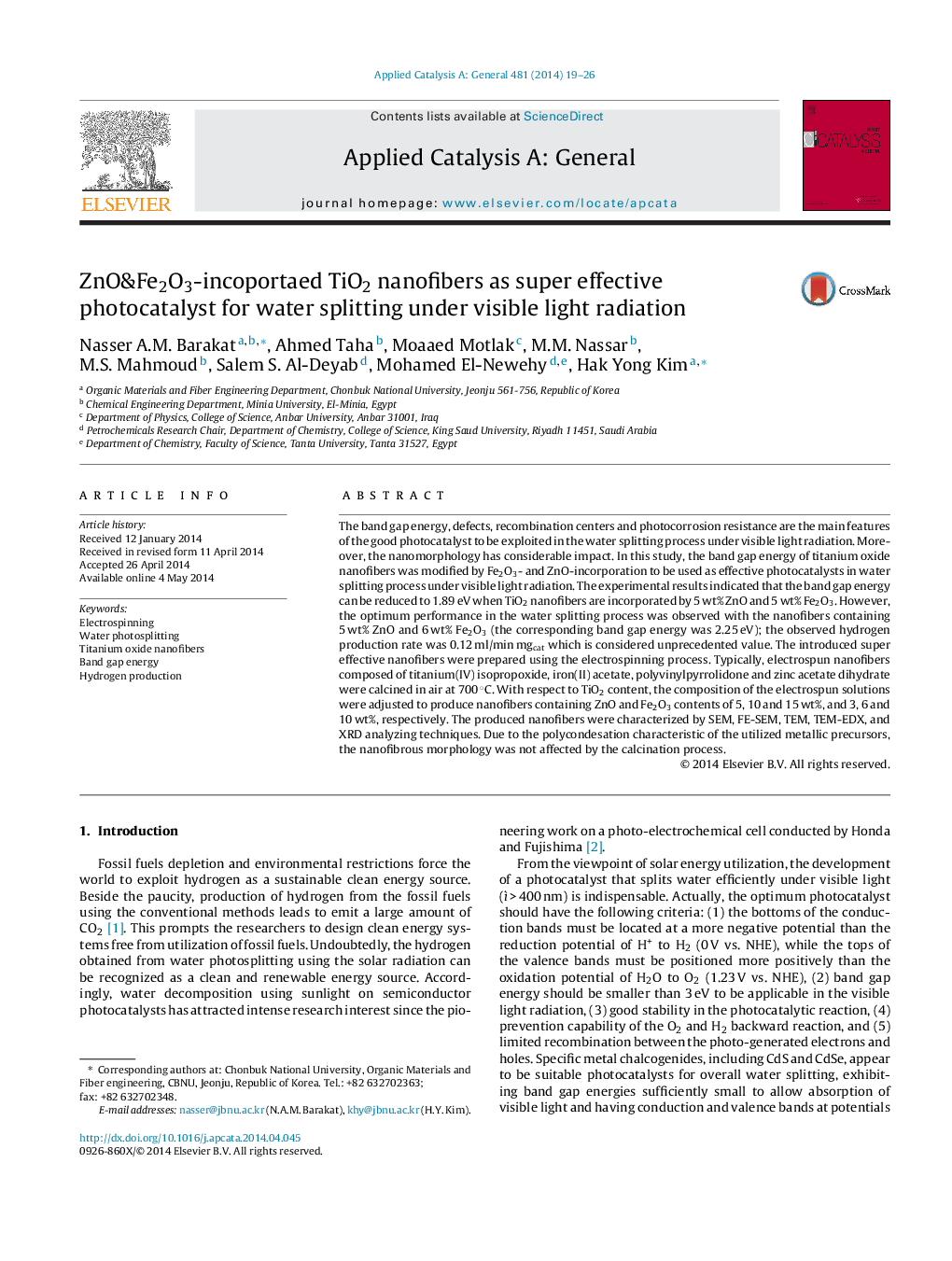| کد مقاله | کد نشریه | سال انتشار | مقاله انگلیسی | نسخه تمام متن |
|---|---|---|---|---|
| 39872 | 45838 | 2014 | 8 صفحه PDF | دانلود رایگان |

• The band gap energy of TiO2 can be controlled by Fe and Zn-incorporating.
• The super effective nanofibers can be produced by electrospinning.
• The introduced nanofibers reveal distinct performance in water photosplitting.
• The surface of the introduced nanofibers is very active.
The band gap energy, defects, recombination centers and photocorrosion resistance are the main features of the good photocatalyst to be exploited in the water splitting process under visible light radiation. Moreover, the nanomorphology has considerable impact. In this study, the band gap energy of titanium oxide nanofibers was modified by Fe2O3- and ZnO-incorporation to be used as effective photocatalysts in water splitting process under visible light radiation. The experimental results indicated that the band gap energy can be reduced to 1.89 eV when TiO2 nanofibers are incorporated by 5 wt% ZnO and 5 wt% Fe2O3. However, the optimum performance in the water splitting process was observed with the nanofibers containing 5 wt% ZnO and 6 wt% Fe2O3 (the corresponding band gap energy was 2.25 eV); the observed hydrogen production rate was 0.12 ml/min mgcat which is considered unprecedented value. The introduced super effective nanofibers were prepared using the electrospinning process. Typically, electrospun nanofibers composed of titanium(IV) isopropoxide, iron(II) acetate, polyvinylpyrrolidone and zinc acetate dihydrate were calcined in air at 700 °C. With respect to TiO2 content, the composition of the electrospun solutions were adjusted to produce nanofibers containing ZnO and Fe2O3 contents of 5, 10 and 15 wt%, and 3, 6 and 10 wt%, respectively. The produced nanofibers were characterized by SEM, FE-SEM, TEM, TEM-EDX, and XRD analyzing techniques. Due to the polycondesation characteristic of the utilized metallic precursors, the nanofibrous morphology was not affected by the calcination process.
Figure optionsDownload high-quality image (210 K)Download as PowerPoint slide
Journal: Applied Catalysis A: General - Volume 481, 5 July 2014, Pages 19–26